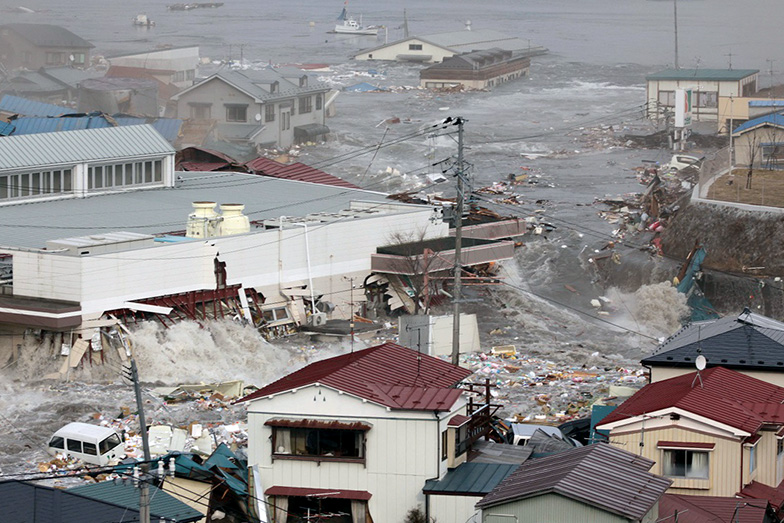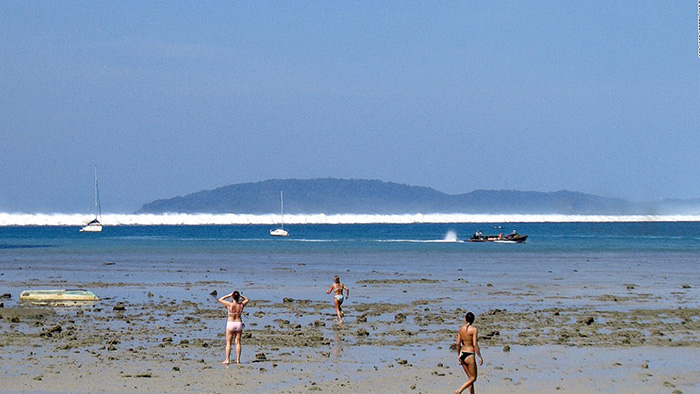The amount of time it takes a tsunami to reach a coast depends on the location of the source of the tsunami relative to where it may strike land. Therefore, tsunamis are often referred to as local or distant.
The source of a local tsunami is close to a coast and it may arrive at nearby coasts in less than one hour, sometimes in just minutes.
Local tsunamis, also called local-source tsunamis and near-field tsunamis, pose the greatest threat because tsunamis are most damaging near their source, and there is little time to issue official warnings and evacuate. Additionally, official tsunami warning may not come quickly or at all if the source is not an earthquake or if the warning infrastructure is damaged.
Therefore, you must know how to recognize and respond to natural tsunami warnings.
The source of a distant tsunami is far away from a coast, sometimes on the other side of the ocean. This means there is more time to issue and respond to warnings (usually at least three hours).
For example, a tsunami generated off Russia will reach the Pacific Northwest Coast of the United States in 7-8 hours, and a tsunami generated off Chile will reach Southern California in about 13 hours. However, distant tsunamis can still have significant impacts on coastal communities.
Distant tsunamis are also called distant-source tsunamis, far-field tsunamis, and teletsunamis.
A tsunami can be both a local and a distant tsunami. For example, if an earthquake off the coast of Alaska causes a tsunami that affects both Alaska and Hawaii, it is a local tsunami for Alaska, but a distant tsunami for Hawaii.

Not all tsunamis act the same, and each individual one may affect coasts differently due to local bathymetry and topography.
Reefs, bays, entrances to rivers, undersea features, and the slope of the shore can all influence the size, appearance, and impact of tsunamis when they strike the coast. A small nondestructive tsunami in one place may be very large and violent a few miles away.
A tsunami arrives at a coast as a series of successive crests (highest parts of the wave) and troughs (lowest parts of the wave). It may look like a fast-rising flood or a wall of water and will not look or act like a normal wind wave. Tsunamis rarely become great towering breaking waves.
Sometimes a tsunami arrives trough first, and, before the water rushes on land, it suddenly recedes, showing the ocean floor, reefs, and fish like a very low tide.

Tsunamis can travel up rivers and streams that lead to the ocean and wrap around headlands, islands, and sand spits. A tsunami's long wavelength provides more momentum for inundation (flooding), so tsunamis often travel much farther inland than normal waves and are more destructive. A large tsunami can flood low-lying coastal areas more than a mile inland.
The maximum height above sea level a tsunami reaches on shore is called the runup. Most runups are less than 10 feet high, but in extreme cases, can exceed 100 feet when a tsunami strikes near its source.
The first wave to reach the shore may not be the last, the largest, or the most damaging. Large tsunamis may continue for days in some locations, reaching their peak often a couple of hours after arrival and gradually tapering off after that.
The time between tsunami crests is unpredictable and varied, typically ranging from approximately five minutes to two hours. Dangerous tsunami currents can last for days.


